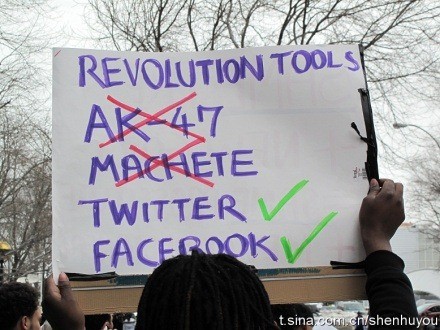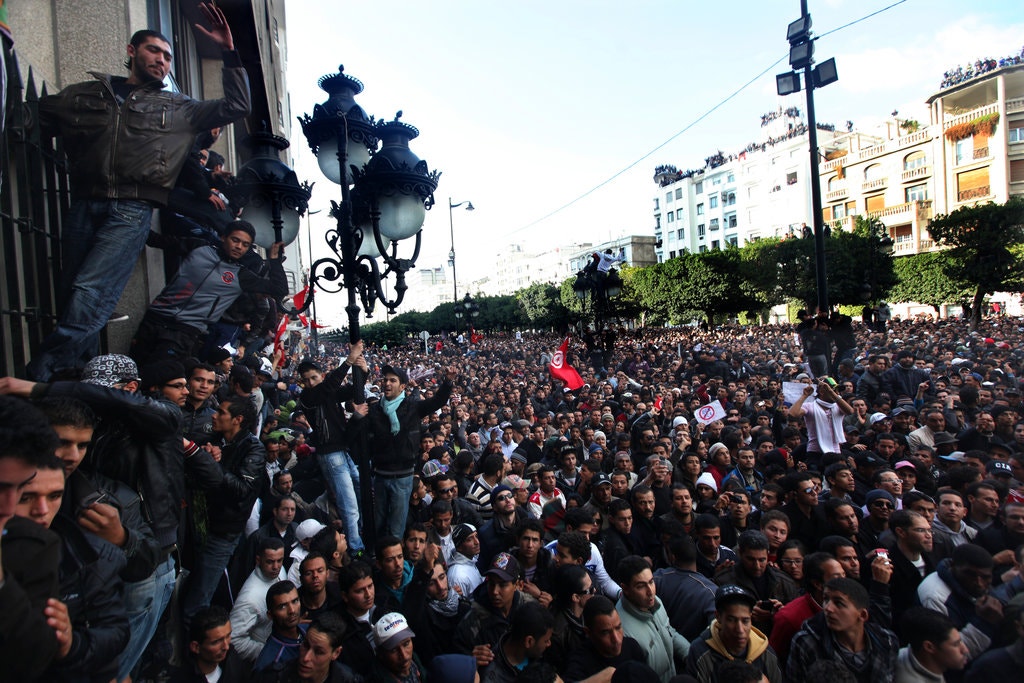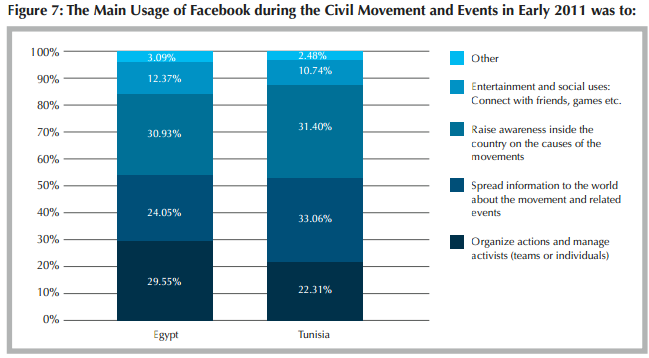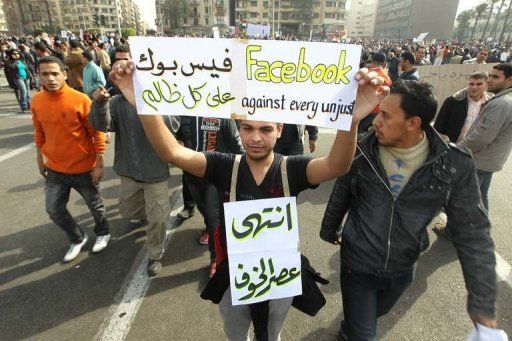The Digital Camera
The Arab Spring
The Arab Spring was a series of protests starting in December 2010, in the Middle East, led by citizens demanding for Democracy. Social media spread awareness around the world and greatly increased the size of the movement.

A protest sign used to fight in the Arab Spring
Source: Medium
Posting pictures on social media allowed the world to view what was happening with the protests, informed citizens of Arab countries, and motivated them to become more involved.
"I was willing to pay whatever price our freedom would cost"
- Ahmed Raafat Amin, age 22, Egypt

Protesters demanding President Ben Ali's resignation by climbing the Ministry of Interior building. January 2011
Source: The New York Times
The Tahrir Square protest in Egypt, led by Esraa Abdel Fattah, used social media platforms to organize and spread awareness about the protest. She is better known as "Facebook girl" after using Facebook and Twitter to inform protesters.

A chart of the usage of Facebook during the Arab Spring
Source: St. Edward's University

Protesters involved in the Arab Spring advocating for the use of Facebook
Source: Yahoo! News
During this time, photos were being shared all over the world revealing that the Arab Spring sparked the power of peaceful protests, the potential of social media to motivate a movement, and the ability to quickly communicate information globally. Social media still serves as a source of motivation for action by creating virtual communities that share the same goals and beliefs.
"Reporting is no longer confined to traditional sources like journalists; instead, social media grants access to unfiltered information related by any person affected by an event who chooses to share the story."
- Sarah Joseph, author of Social Media, Political Change, and Human Rights, 2012